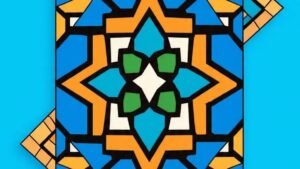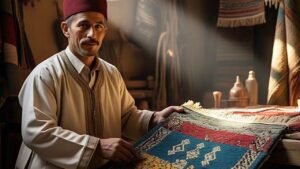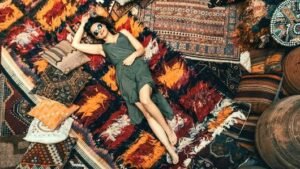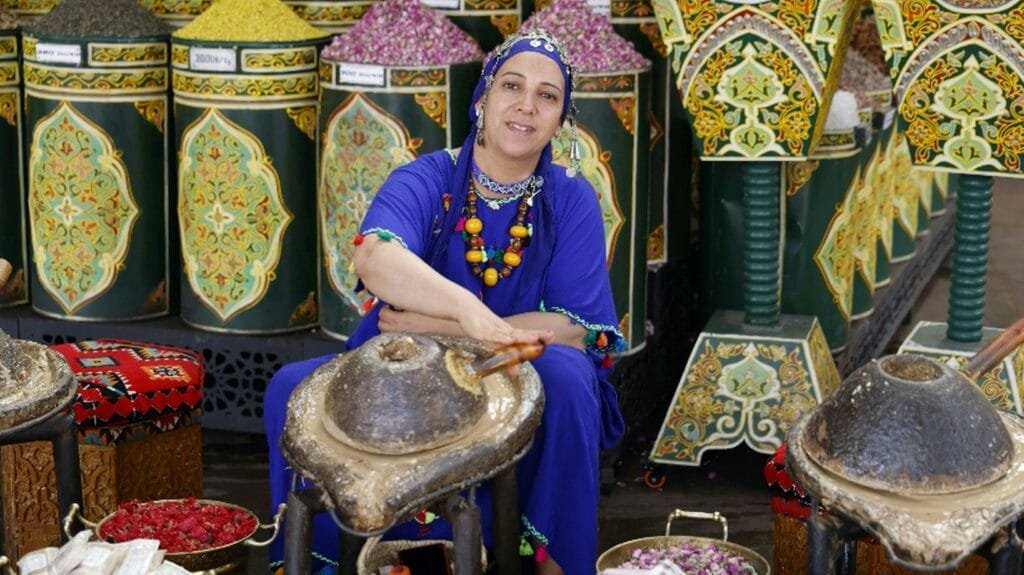
At the foothills of the Atlas Mountains, Moroccan Berber handicrafts come alive, shaped by the hum of ancestral whispers. The air carries the crisp scent of cedar and juniper, mingling with the distant, rhythmic tapping of a loom. The sun dips low, spilling gold across earthen villages clinging to the mountainsides, where Berber artisans weave not just rugs but entire histories. This scene is a testament to the interplay between geography and identity, molding these crafts into living poetry.
The Loom of the Land: Geography’s Influence on Berber Artistry
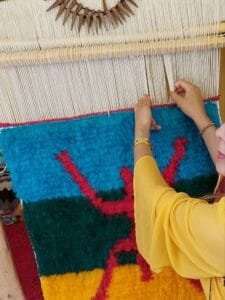
To understand Moroccan Berber Handicrafts, one must first trace the sinews of their origin in the Atlas Mountains. These towering peaks, snow-capped and formidable, shape not only the lives of those who dwell among them but also the art that springs from their hands. Geography, here, is no passive backdrop. It is the weft and warp of creativity itself.
In the High Atlas, life is carved from the land’s austerity. Villages like Taznakht and Ait Benhaddou, perched on rugged inclines, are cradles of traditional weaving. The wool for rugs, dyed in hues of saffron, indigo, and pomegranate, reflects the region’s palette. “The mountains speak to us,” says Aicha, a weaver from a small village near Ouarzazate. “Their colors are in our rugs, their spirit in our patterns.” These patterns—zigzags, diamonds, and talismans—are not arbitrary; they mirror the land’s contours and carry symbolic meanings tied to fertility, protection, and continuity.
Further north, in the Middle Atlas, cedar forests provide the raw material for intricate woodcarvings. Artisans transform this resilient wood into everything from geometric panels to delicate jewelry boxes. The carving tools themselves are as storied as the finished products, often passed down through generations. Here, geography is both canvas and collaborator, offering its bounty while demanding reverence.
Threads of Memory: The Cultural Significance of Moroccan Berber Handicrafts
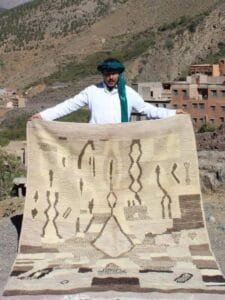
For the Berbers, known as the Amazigh or “free people,” their crafts are not merely utilitarian. They are archives of identity, cultural resilience etched into every thread and stroke. Moroccan Berber Handicrafts serve as both art and autobiography, bearing witness to centuries of adaptation, migration, and survival.
Take, for instance, the Beni Ourain rugs, with their minimalist designs of black lines on an ivory background. Often marketed as modern décor, these rugs are in fact steeped in tradition. Each line tells a story: a birth, a harvest, a season of drought. “We weave our lives into these rugs,” explains Mohamed, a weaver from the Imlil region. The simplicity of their patterns belies their depth, making them a quiet yet powerful testament to Berber philosophy—rooted in balance and harmony with nature.
Jewelry, too, carries layers of meaning. Heavy silver necklaces adorned with amber and coral are more than ornaments; they are talismans. The choice of materials—amber from the Sahara, coral from Mediterranean trade routes—speaks of a historical interconnectedness, while their motifs ward off the evil eye. Worn during weddings and festivals, these pieces are both protective armor and a celebration of continuity, tying the wearer to their ancestors and the land.
The Artisan’s Hand: Techniques Passed Through Generations

Moroccan Berber Handicrafts are defined not just by their beauty but by the painstaking processes that birth them. These techniques, preserved through oral traditions and apprenticeship, are as intricate as the crafts themselves.
Rug weaving, for example, begins with shearing sheep in the spring, followed by washing and spinning the wool. The dyes—natural pigments derived from local plants, earth, and insects—require alchemical precision. Madder root for red, henna for orange, and crushed cochineal insects for deep crimson. The weaving process, often done on vertical looms, is a labor of devotion. Each rug can take months, sometimes a year, to complete. “A single knot is nothing,” says Malika, an elder weaver from the Anti-Atlas, “but together, they become a story.”
Metalwork, another pillar of Berber artistry, thrives in mountain towns like Taroudant. Silversmiths use age-old techniques such as repoussé (hammering metal from the reverse) and niello (a black alloy inlay) to craft bracelets, daggers, and amulets. Every piece carries the echo of ancient skills, refined yet untouched by industrial haste. The process is as much about patience as precision, with each strike of the hammer preserving a fragment of cultural memory.
Songs of Stone and Clay: Pottery and Architecture
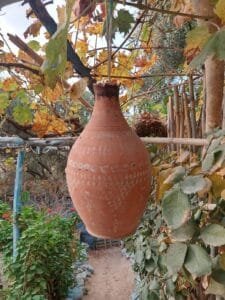
While textiles and jewelry often take center stage, Moroccan Berber Handicrafts extend into the very fabric of daily life, including pottery and architecture. These crafts, too, are deeply influenced by the surrounding landscape.
In the valleys of the Middle Atlas, women craft pottery from local clay, shaped with their hands and fired in open-air kilns. Unlike the ornate ceramics of Fez, Berber pottery is utilitarian, earthy, and raw, yet imbued with subtle beauty. Geometric etchings on water jugs and cooking pots reflect the same motifs found in rugs, creating a continuity of design that ties together different facets of Berber life.
Architecture in Berber villages also exemplifies the harmony between art and geography. The iconic kasbahs, with their adobe walls and crenellated towers, rise organically from the land, their colors blending seamlessly with the surrounding earth. These fortified homes are not just shelters but communal expressions of artistry. Inside, painted ceilings and carved wooden doors speak of a deep aesthetic sensibility, one that finds beauty in functionality.
The Soul of Moroccan Berber Handicrafts: A Living Heritage
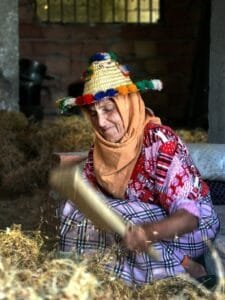
Moroccan Berber Handicrafts are more than relics of a bygone era; they are living, breathing traditions. In every thread, every chiseled line, every painted vessel, there is an unbroken line connecting past to present. This continuity is not merely historical—it is deeply personal, a lifeline of identity in a rapidly changing world.
The resilience of these crafts lies in their adaptability. Young artisans are finding new ways to honor tradition while meeting the demands of modern markets. Cooperative groups, often led by women, are bringing Berber crafts to a global audience, ensuring their survival without sacrificing authenticity. Yet, even as these crafts evolve, their essence remains tied to the land. The mountains, with their imposing silence, are ever-present—both a challenge and a muse.
As the sun sets over the Atlas, casting long shadows across its jagged peaks, you see the artistry of the Berber people everywhere. It is in the woven rugs spread on stone floors, in the silver jewelry catching the last rays of light, in the clay pots nestled by hearths. Each piece is a fragment of a larger mosaic, a reminder that art and geography are inseparable. Moroccan Berber Handicrafts are not just objects; they are vessels of memory, spirit, and place, waiting to be read like poems written by the earth itself.

